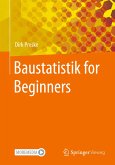Any Structure can be classified as B(Beam or Bernoulli)regions and D(disturbed/discontinuity) regions. B-regions are in which Bernoulli's hypothesis of straight-line strain profile applies. D-regions are parts of structure with a complex variation in strain profile. D-regions include portions near abrupt changes in geometry or concentrated forces. Based on St.Venant's principle, the extent of D-region spans about one section depth of the region on either side of the discontinuity. In conventional design practice, B-regions are designed accurately but D regions are designed using rules of thumb.This project aims to give a design procedure which is equally applicable for designing both B and D regions.The idea of Strut and Tie Model (STM) came from the Truss analogy method introduced by Ritter and Morch in the early 1900s for shear design. The truss model has also been used as the design basis for torsion.For analytical purposes, STM condense all stresses in compression and tensionmembers and join them by nodes.The STM is emerging as a code-worthy methodology for the design of all types of D-regions in structural concrete.
Bitte wählen Sie Ihr Anliegen aus.
Rechnungen
Retourenschein anfordern
Bestellstatus
Storno








